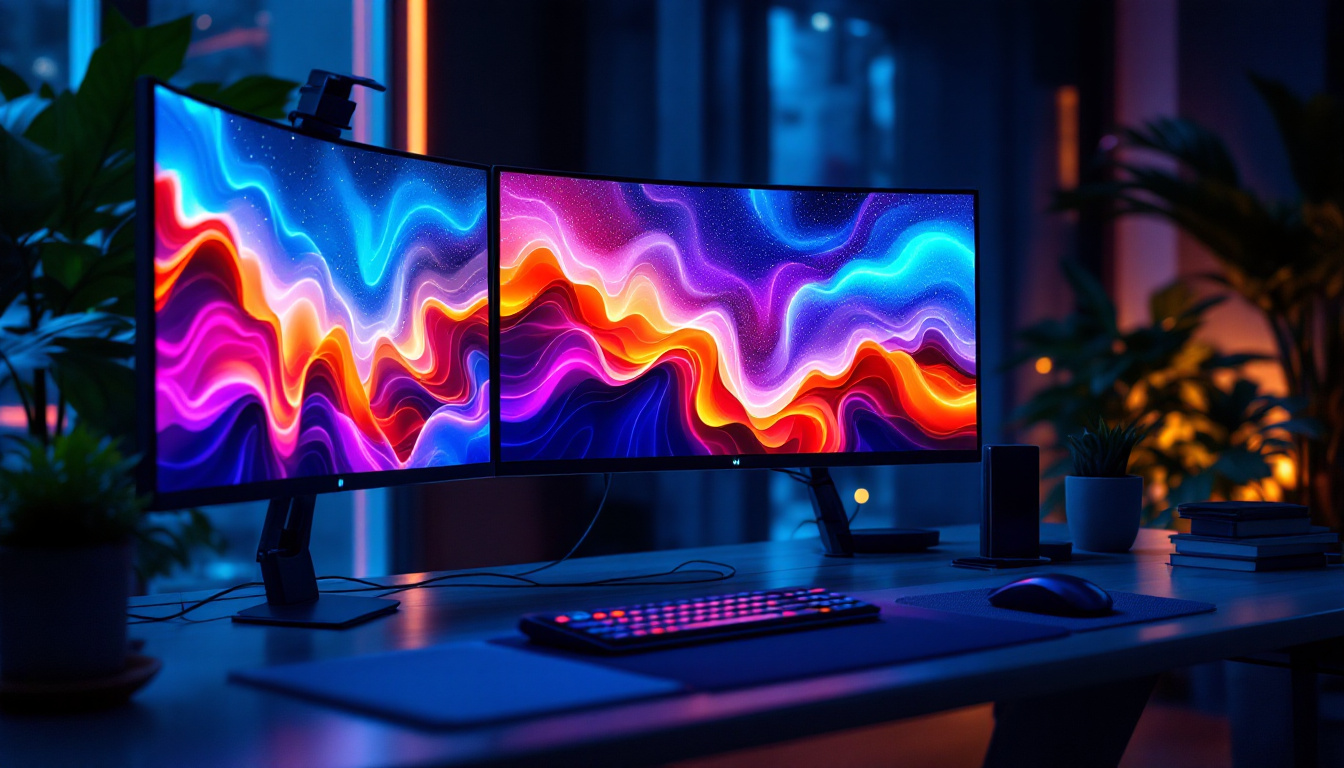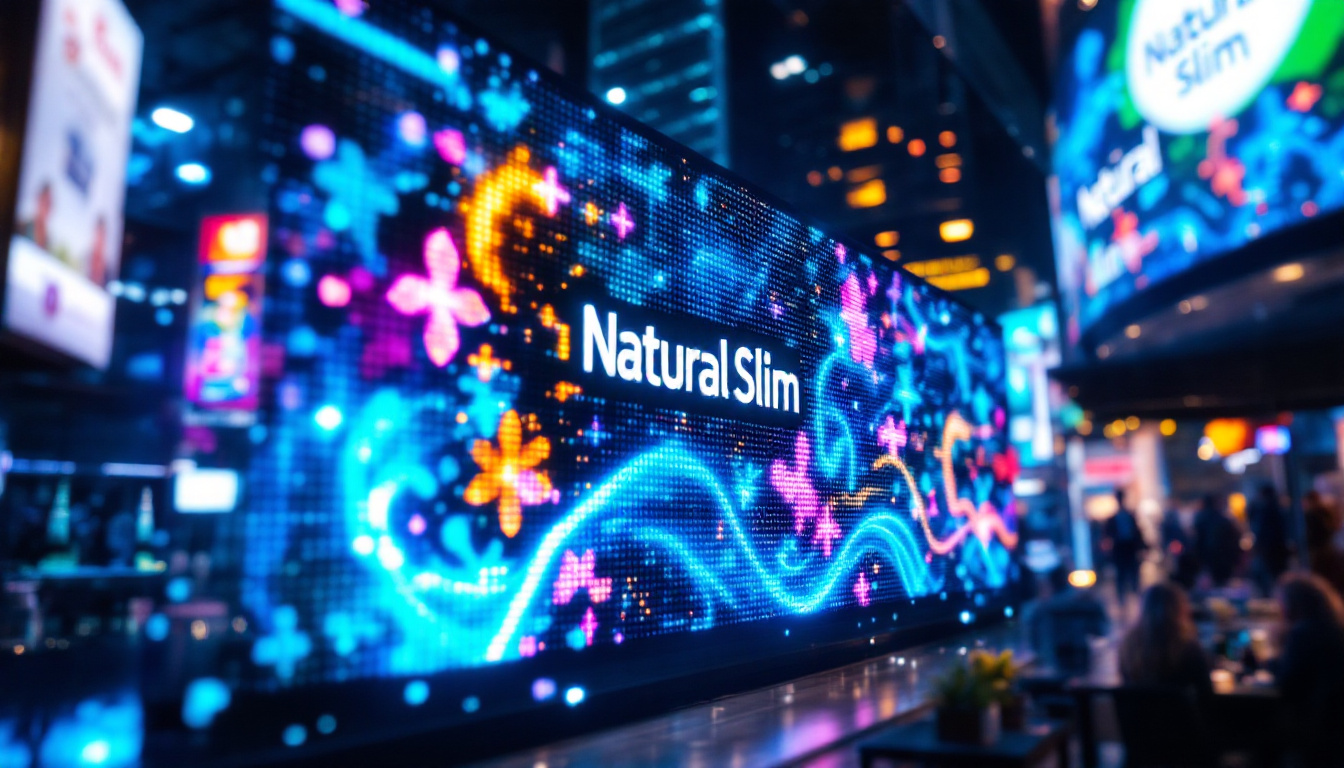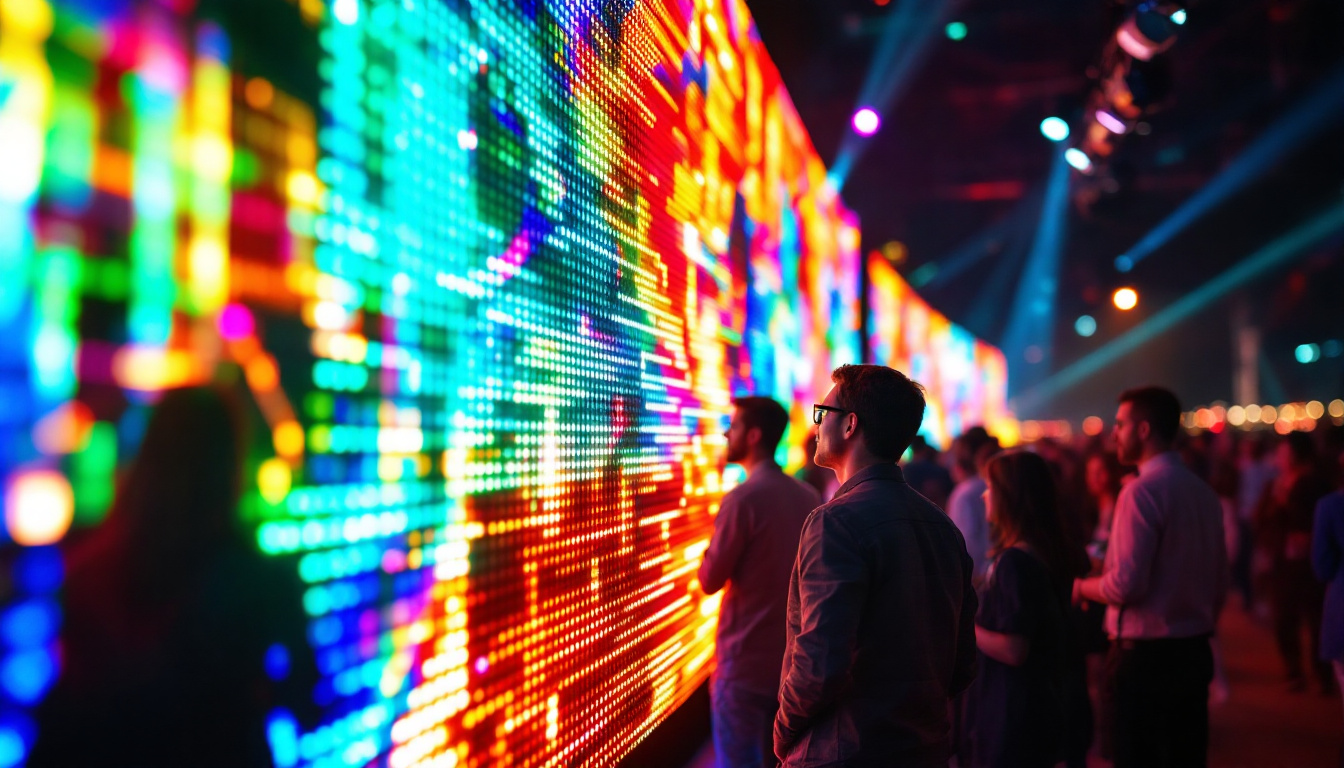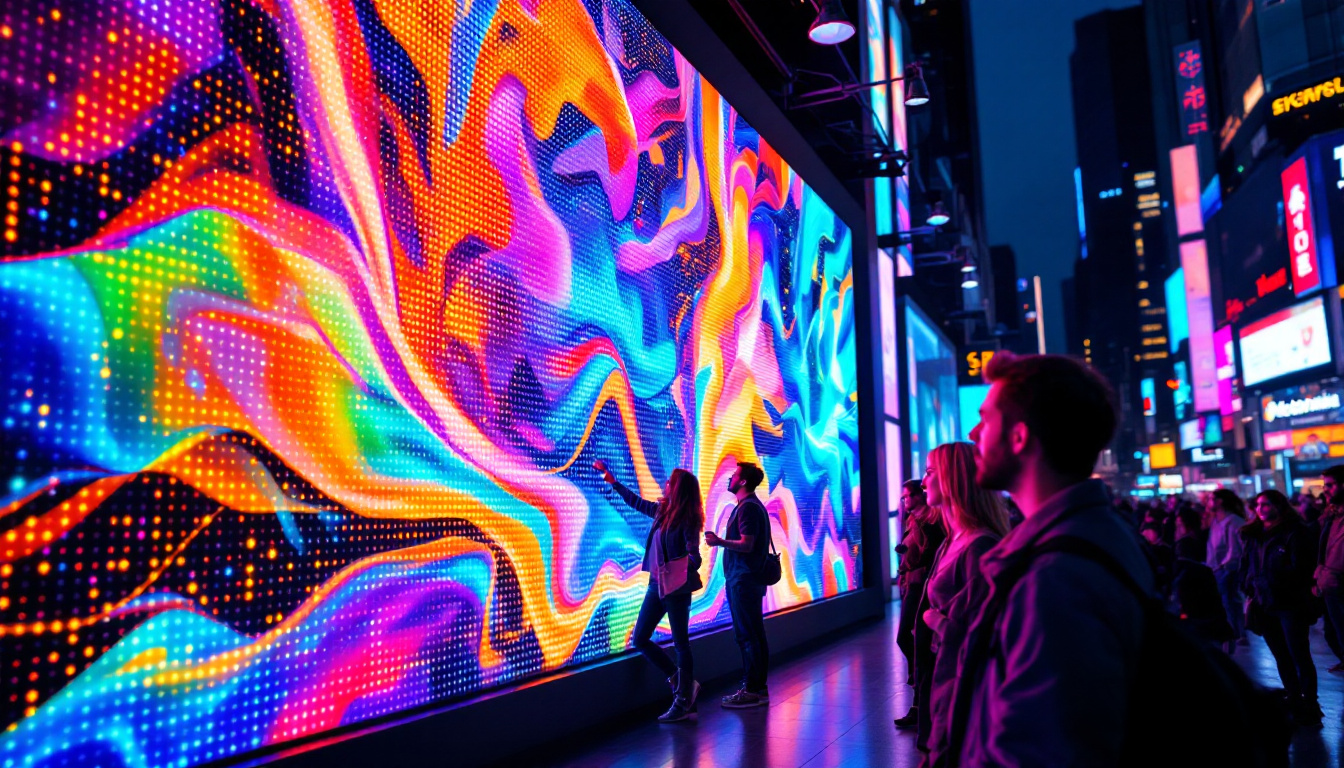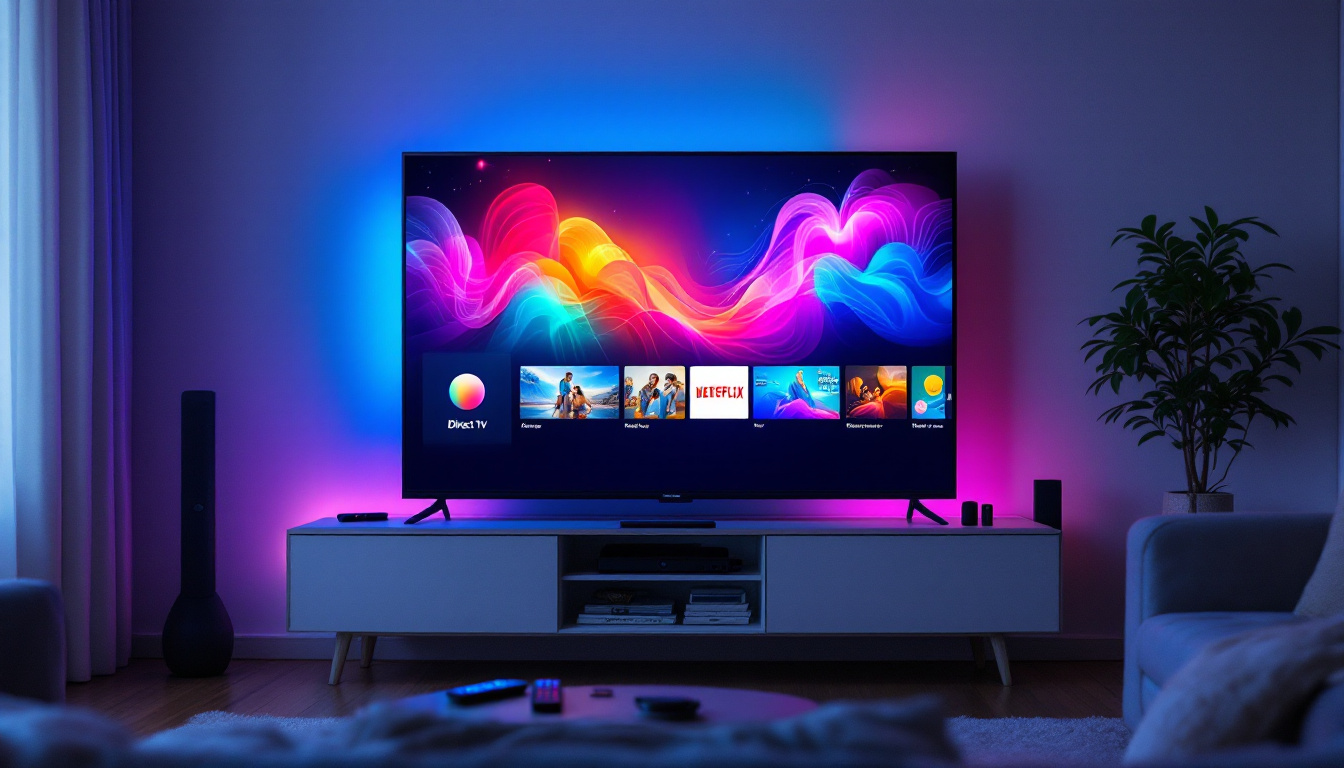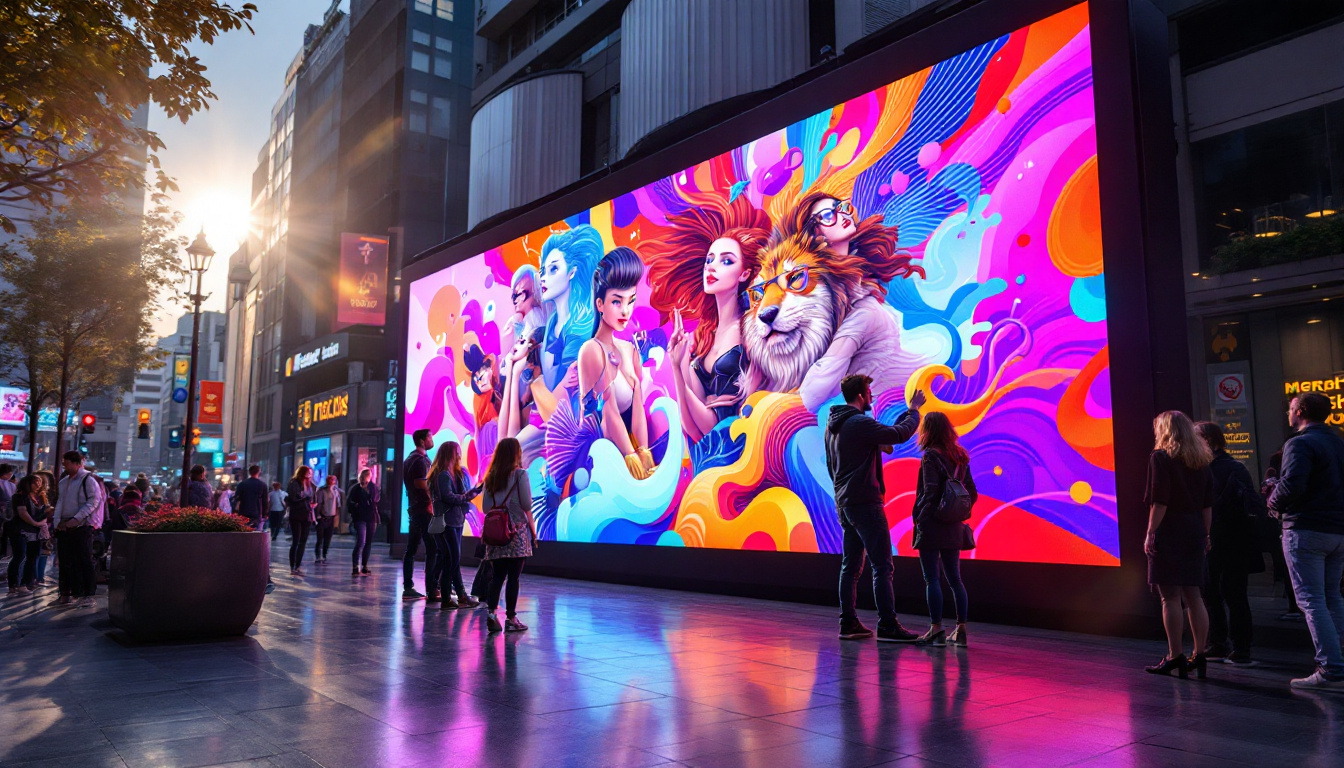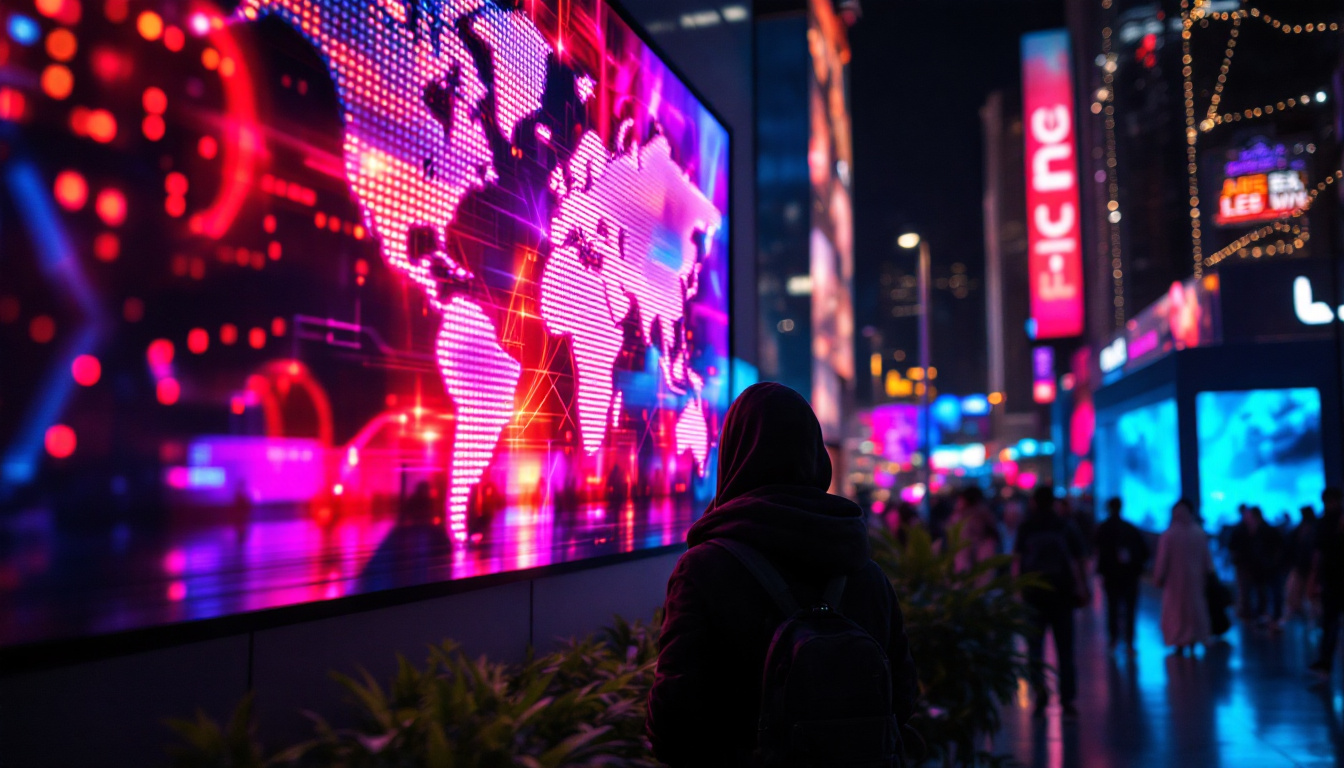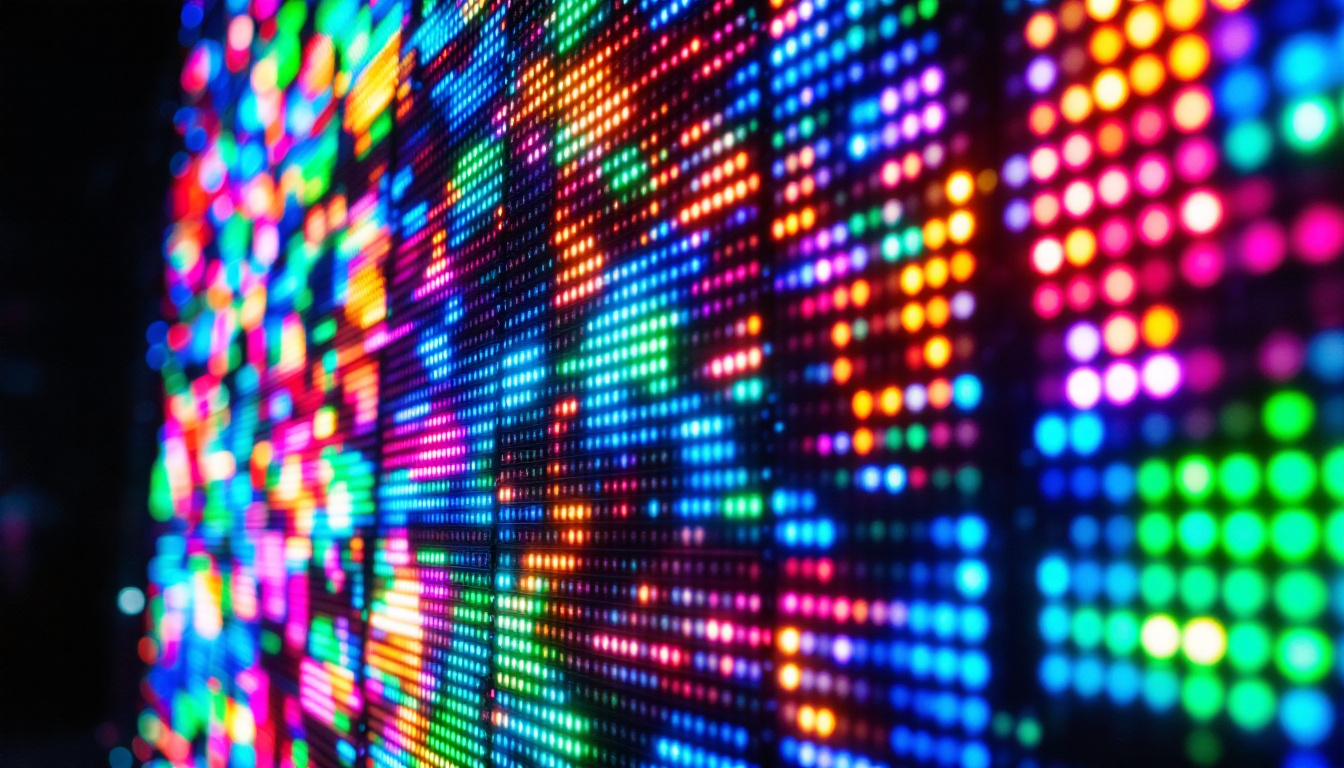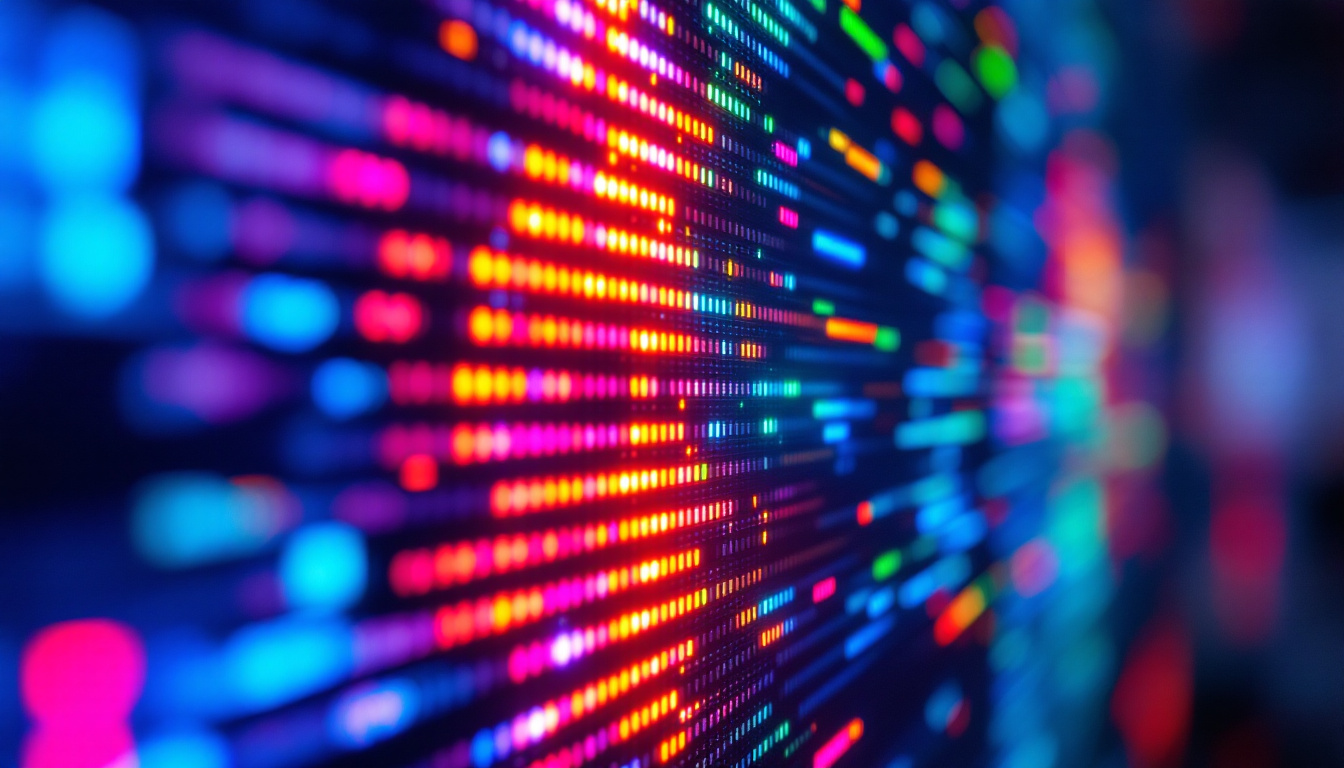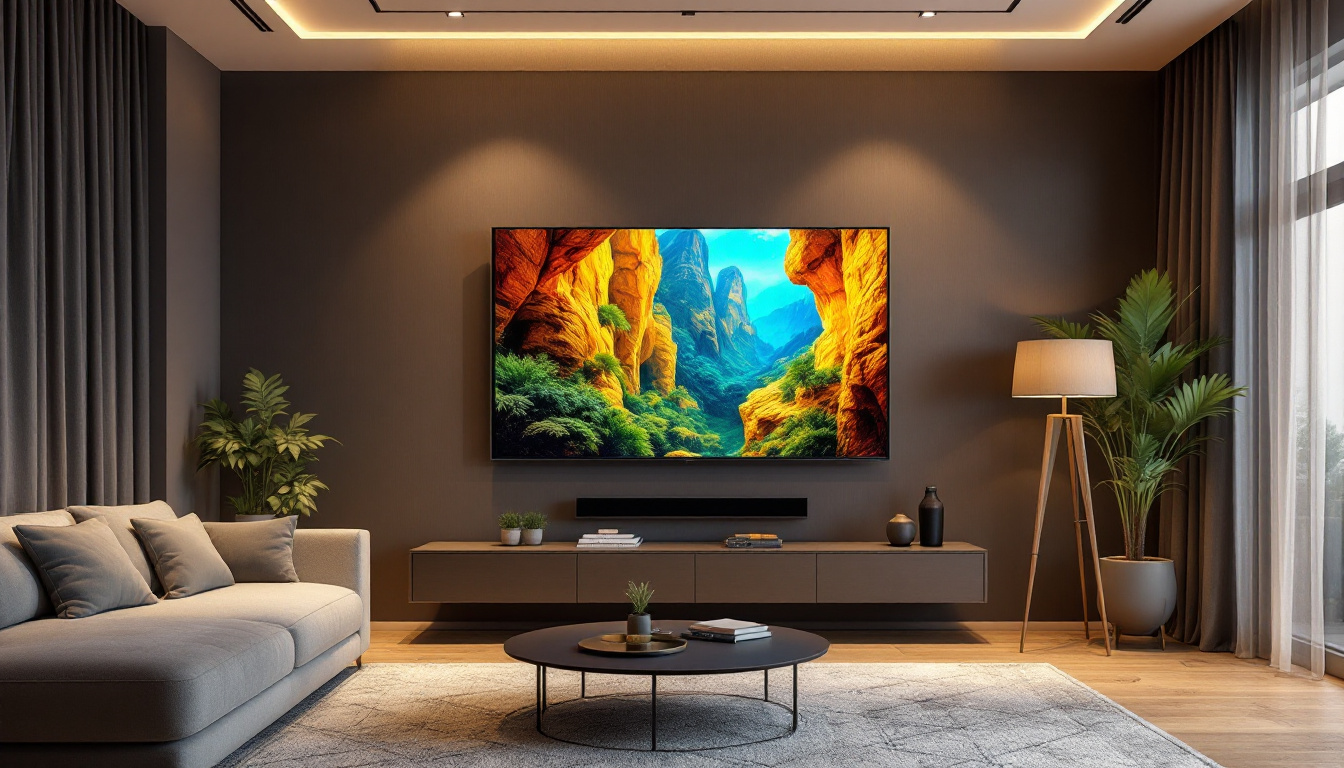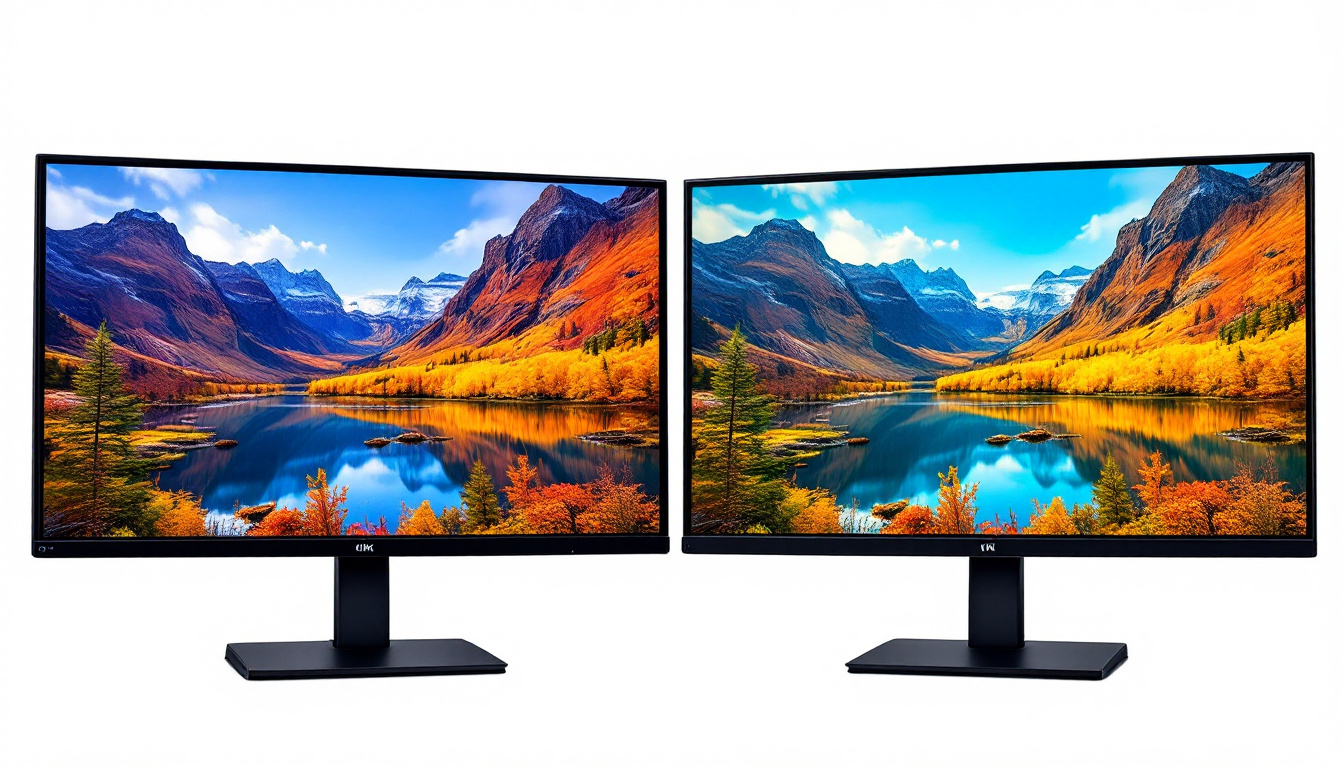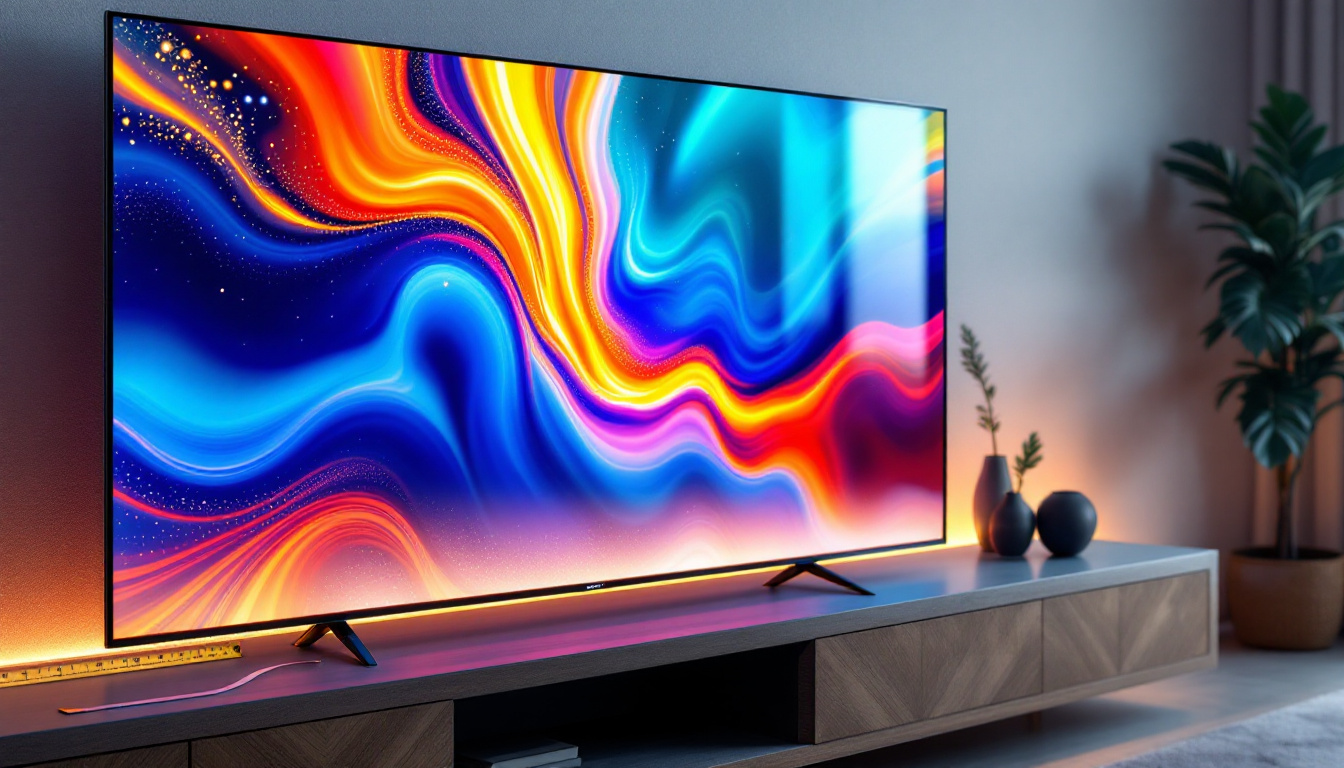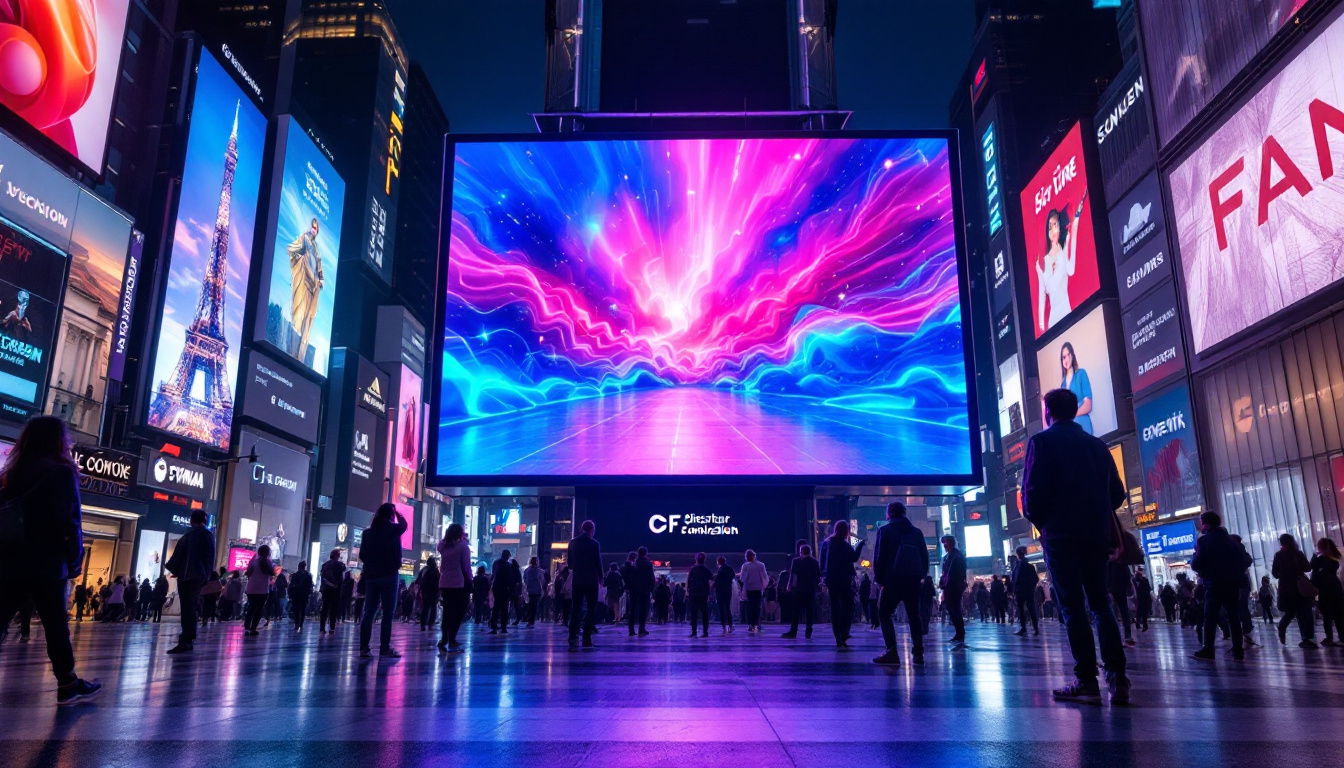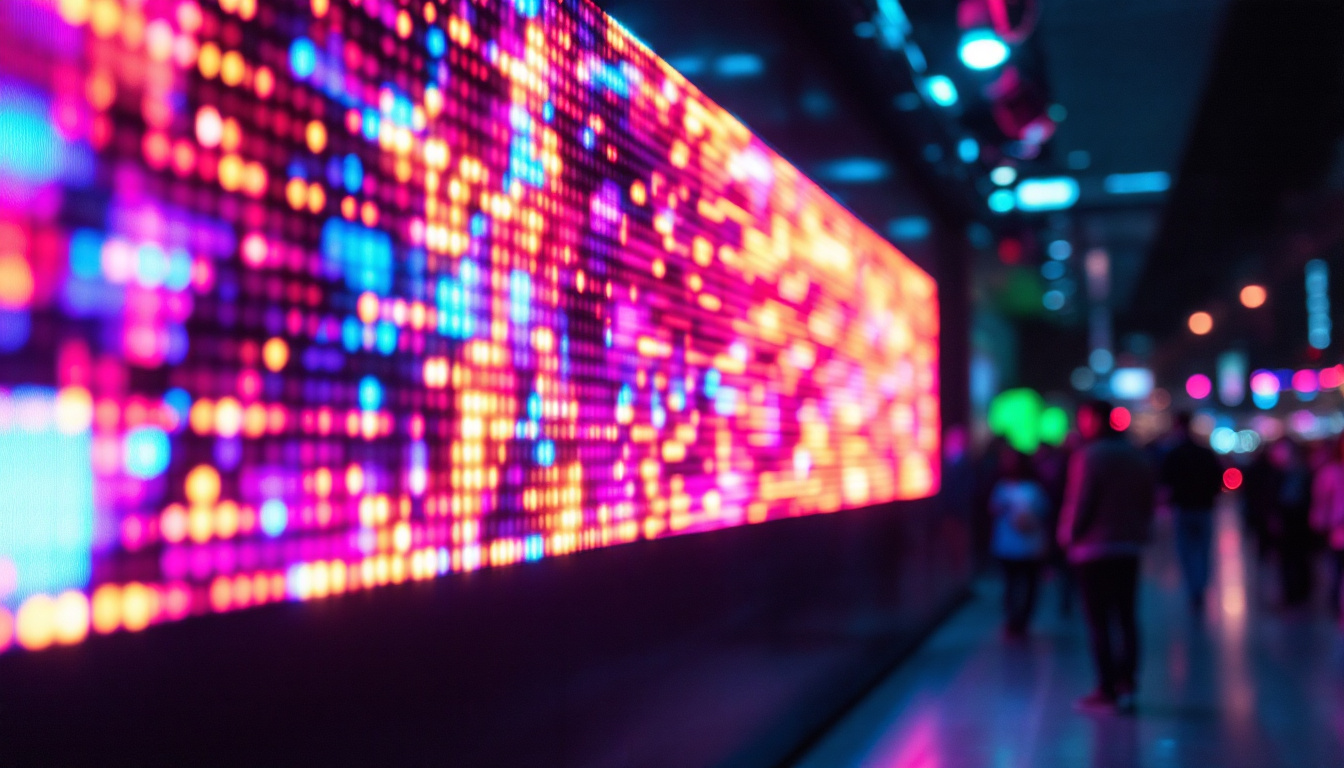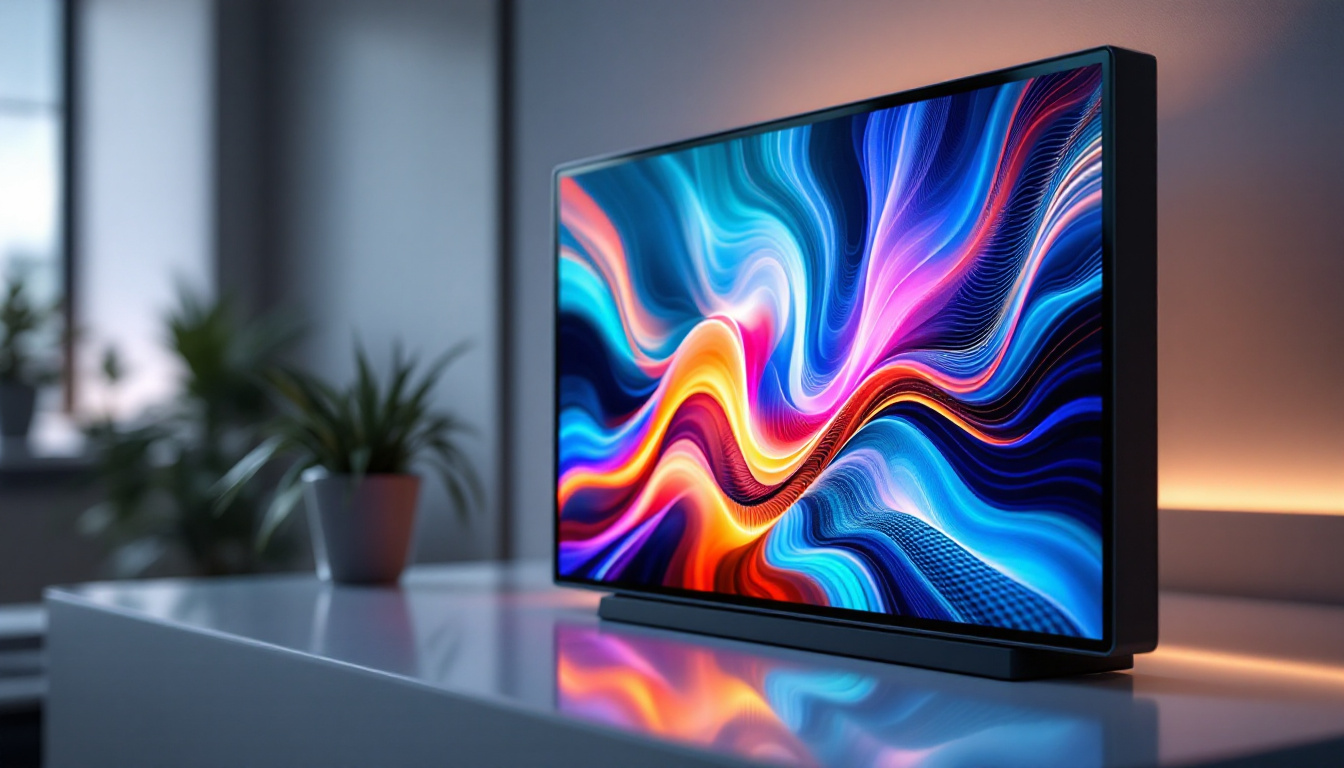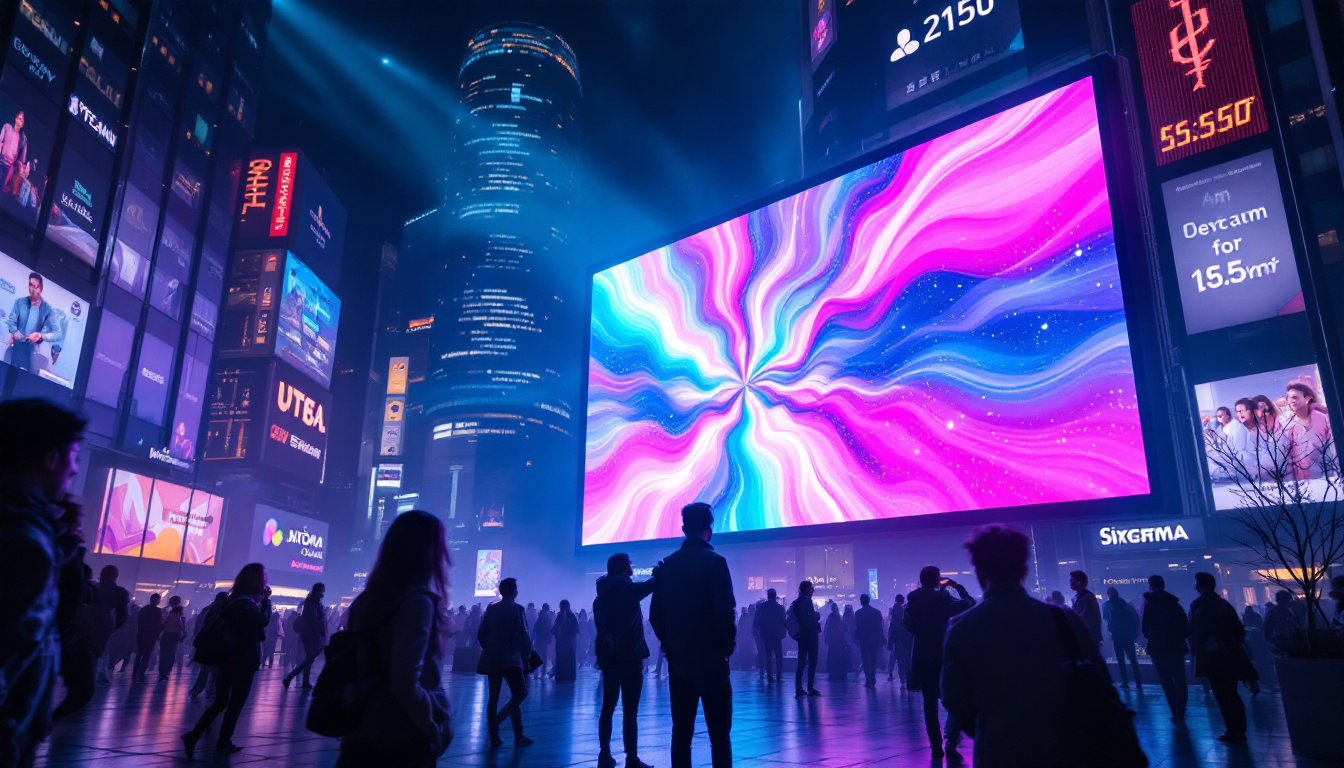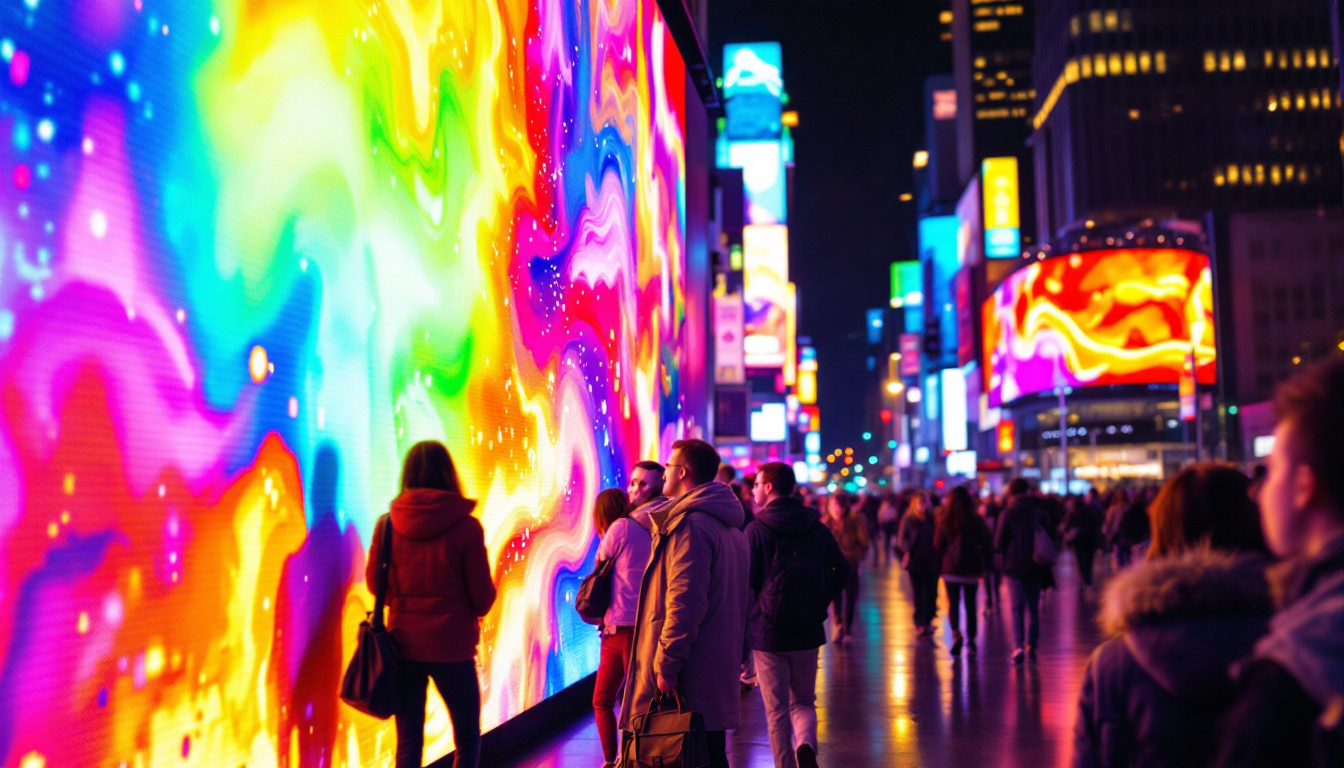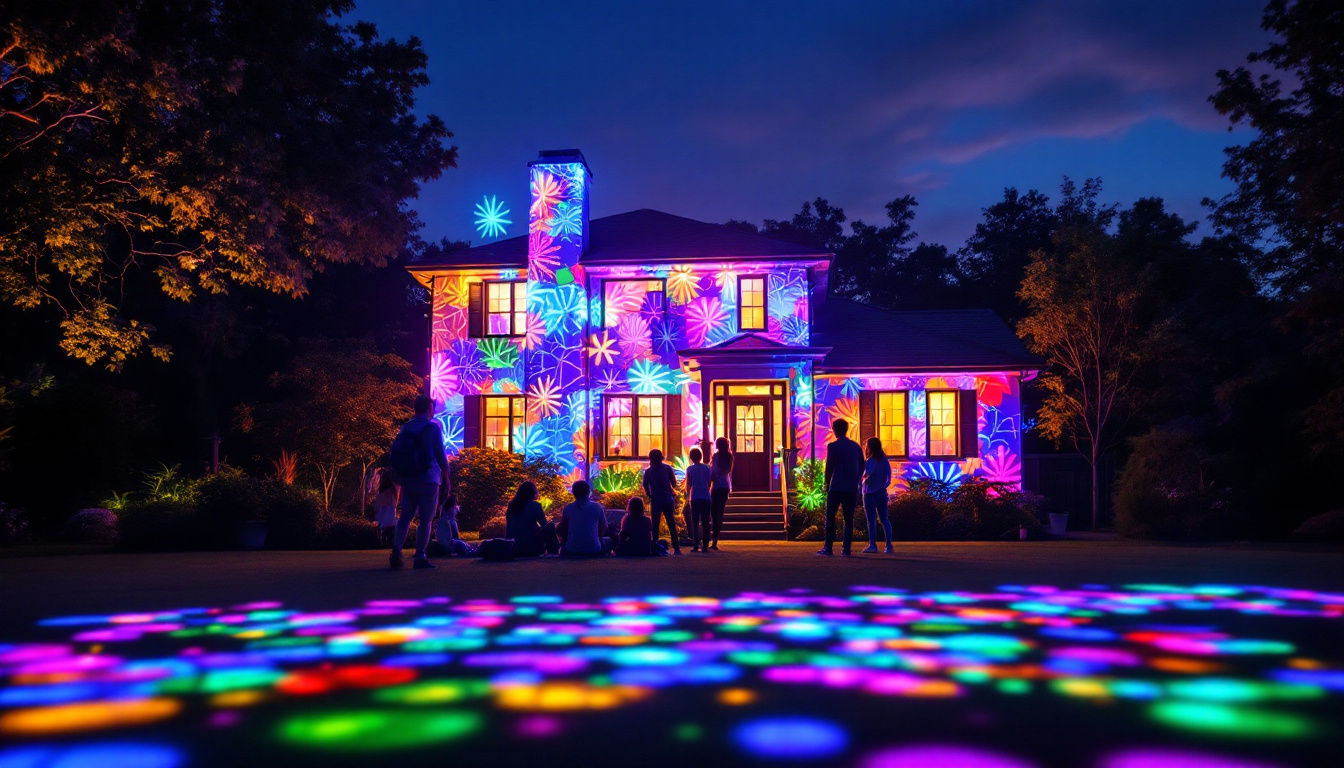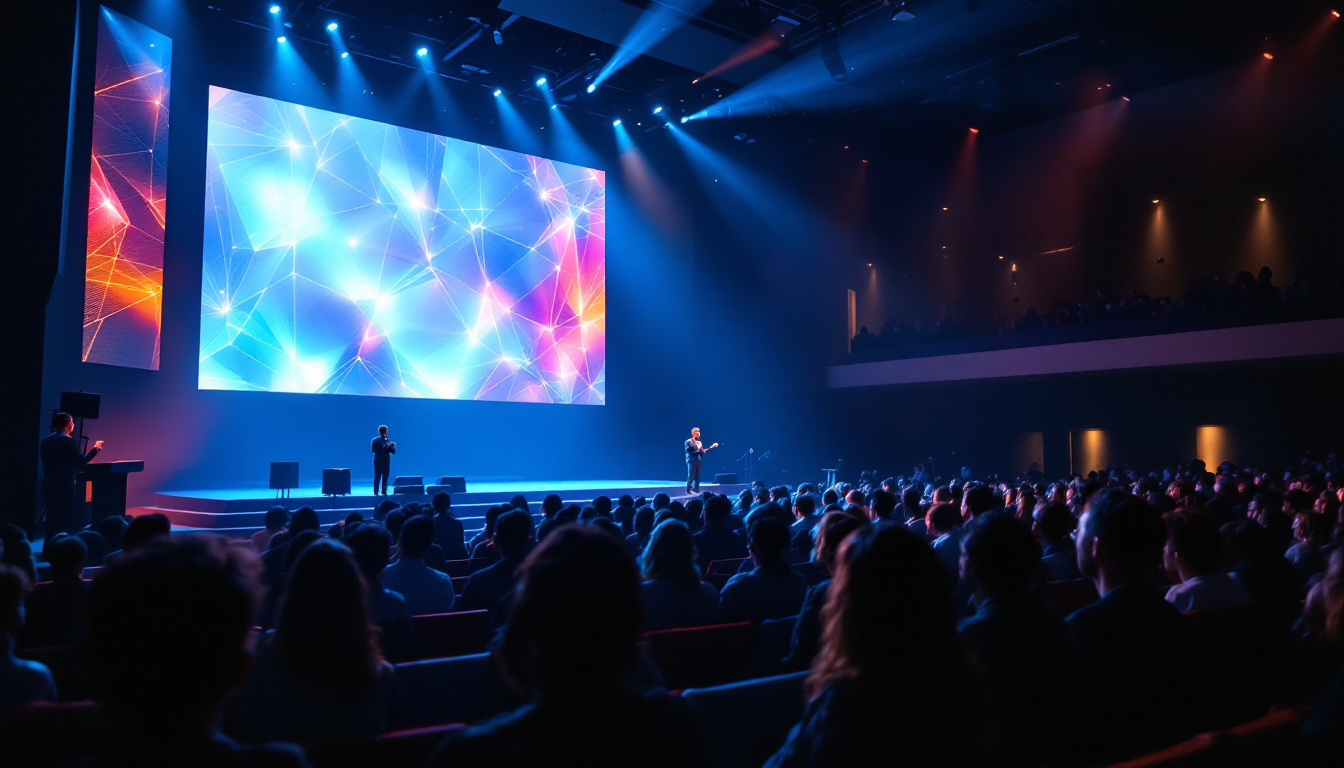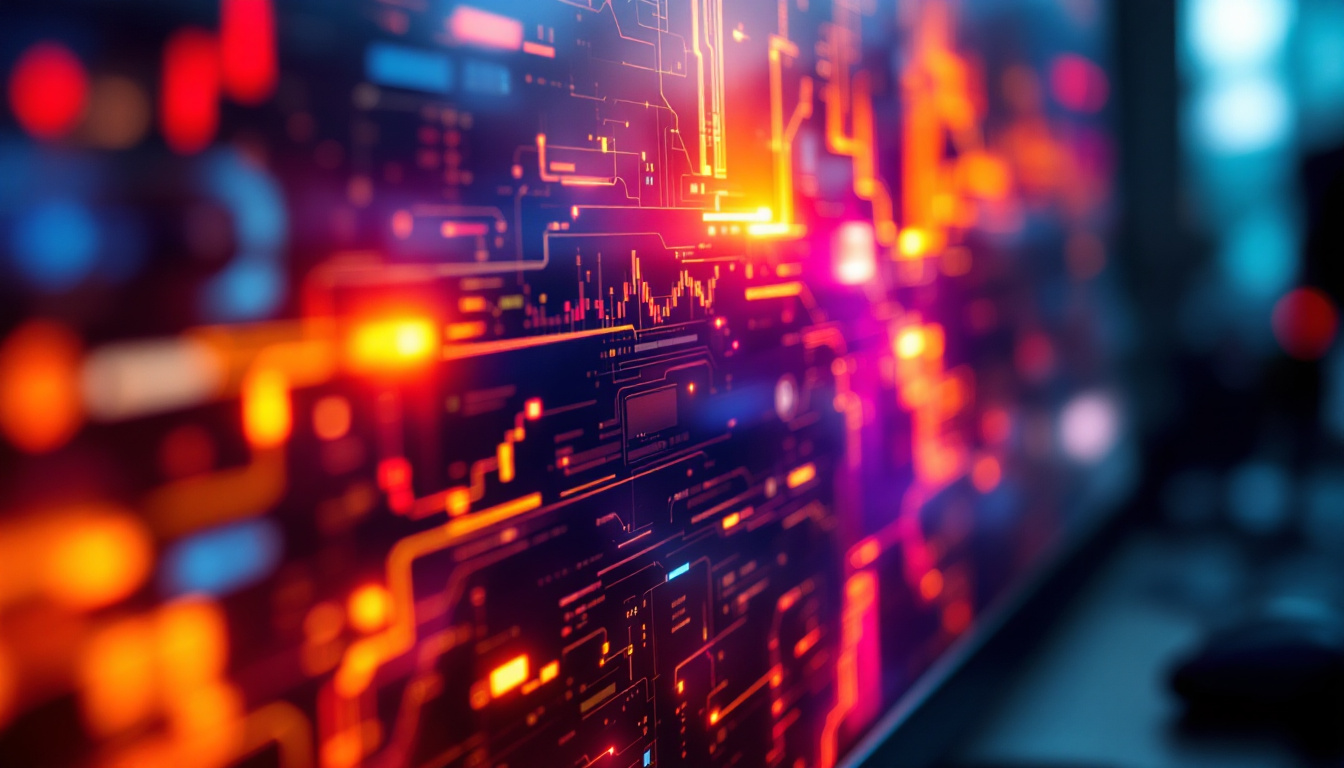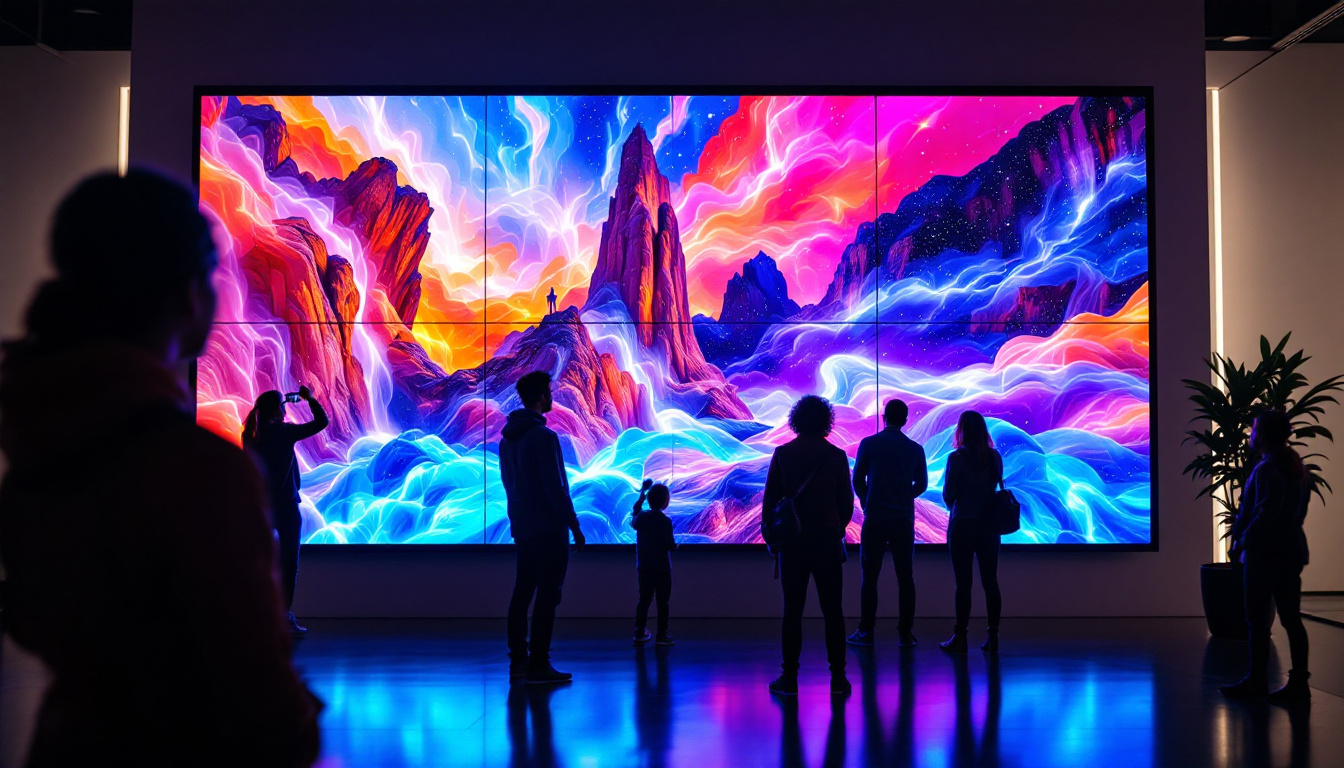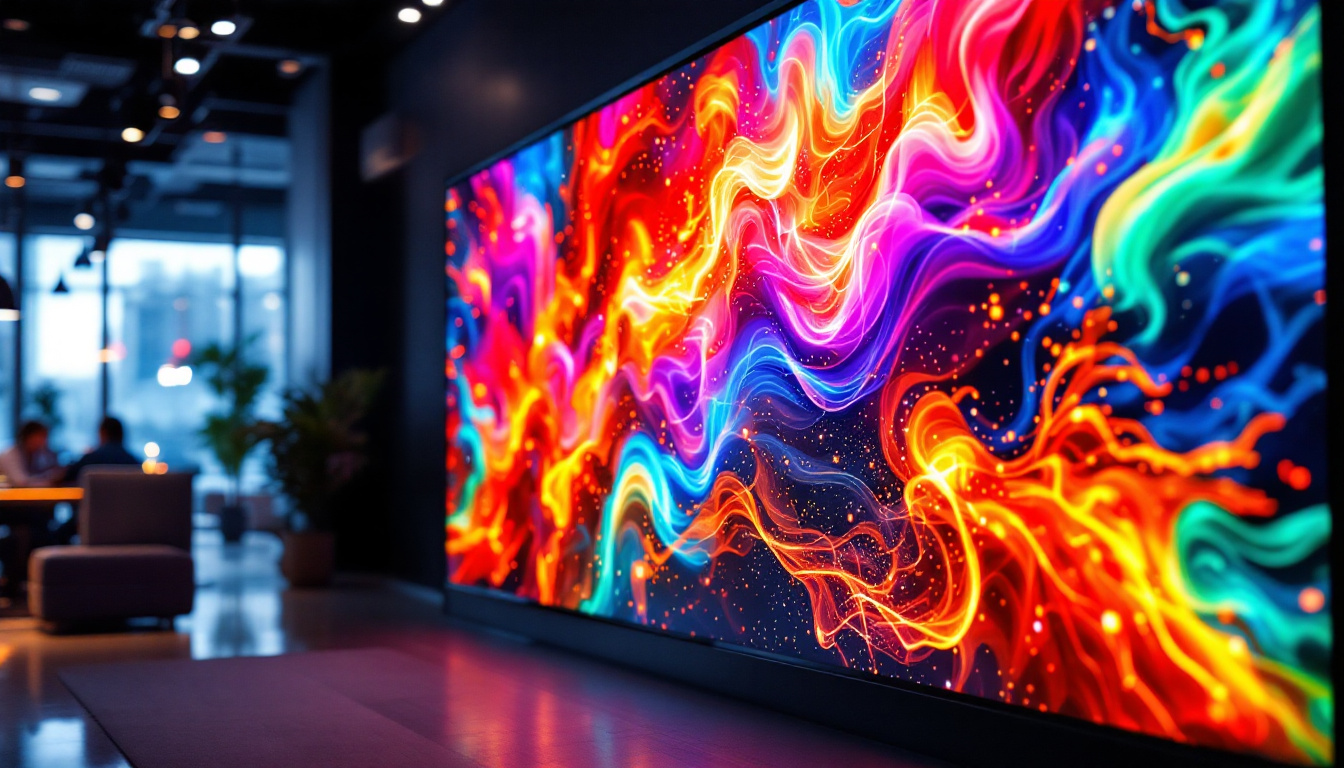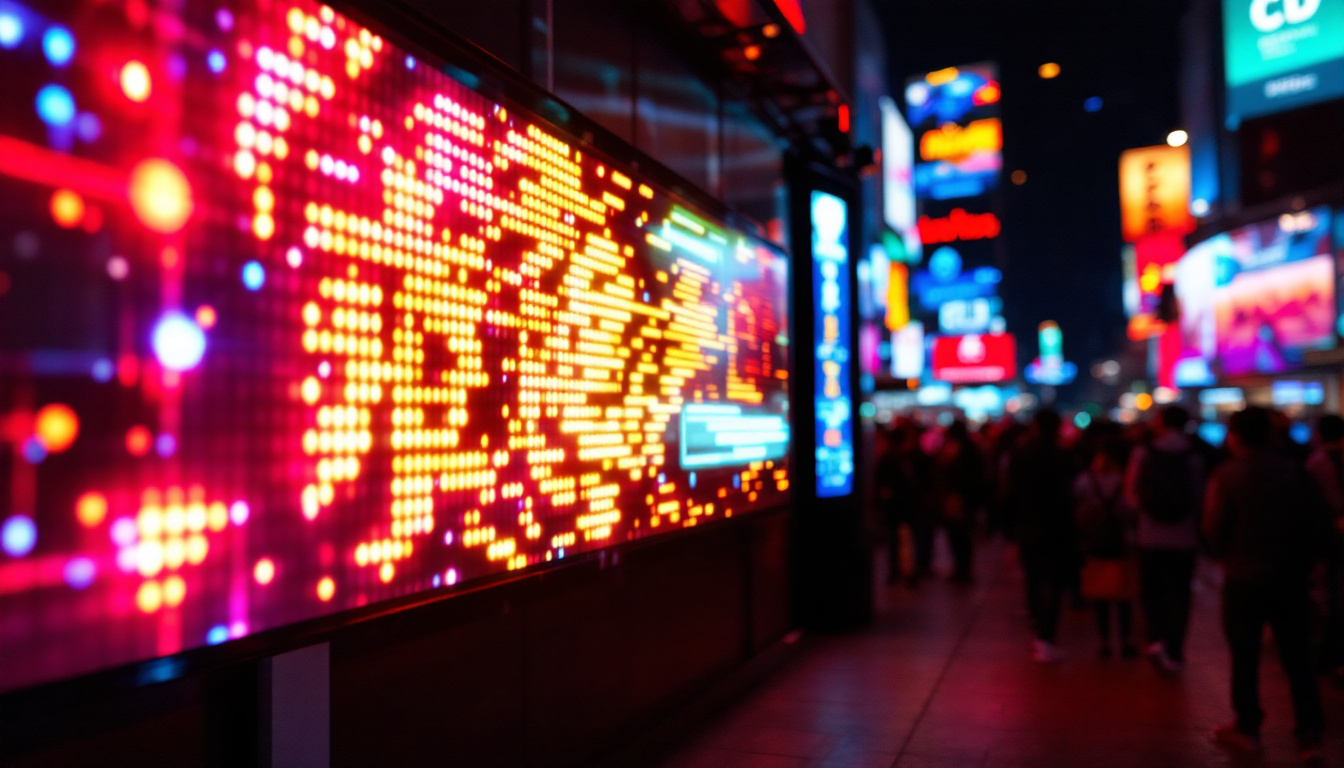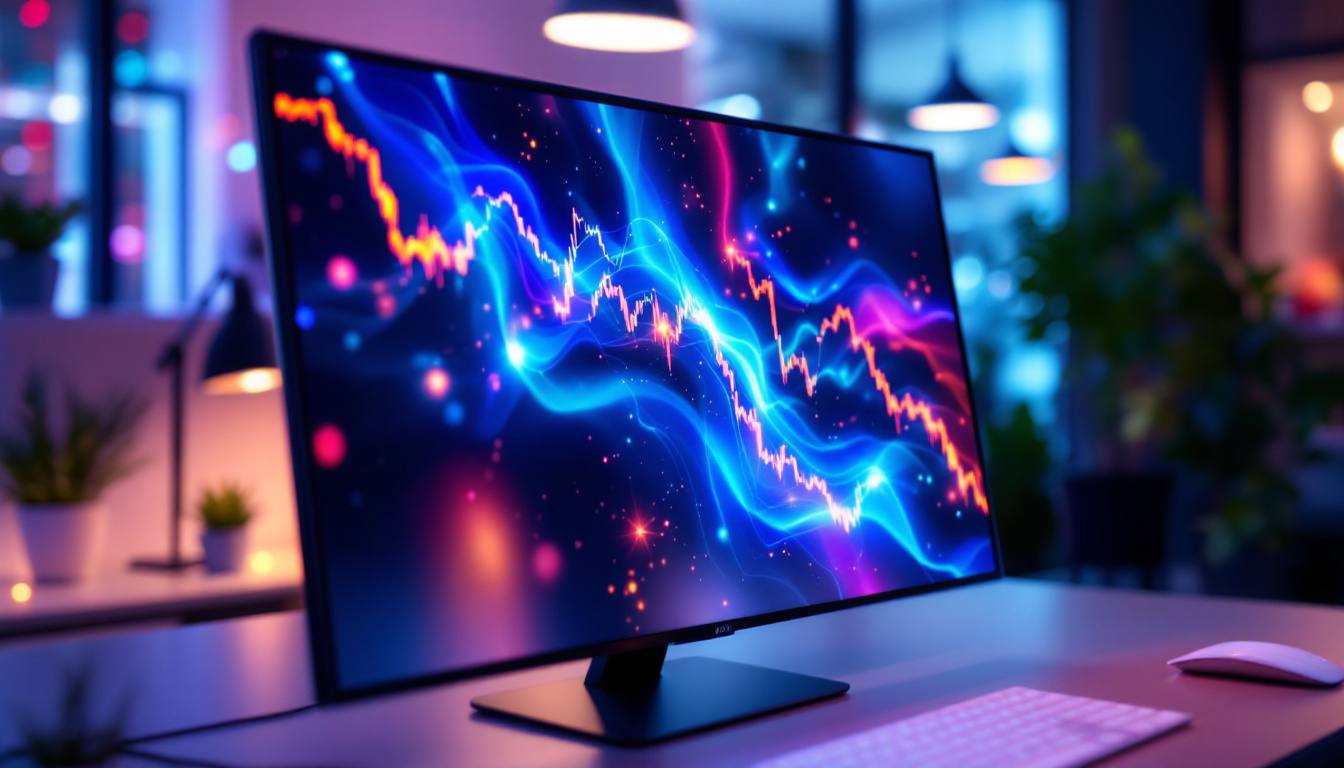In recent years, LED displays have become a significant part of our visual landscape, transforming how we experience media in various settings. From large outdoor billboards to indoor screens in shopping malls and stadiums, these displays have revolutionized the way information is presented. This article delves into the intricacies of LED technology, its applications, and the advantages it offers over traditional display methods.
Understanding LED Technology
LED, or Light Emitting Diode, is a semiconductor device that emits light when an electric current passes through it. This technology has evolved significantly since its inception, leading to the creation of vibrant and energy-efficient displays. The fundamental principle behind LEDs is electroluminescence, where electrical energy is converted into light energy. This process not only allows for brighter and more colorful outputs but also contributes to the longevity of the devices, making them a preferred choice in modern lighting and display solutions.
In recent years, advancements in LED technology have led to the development of smart LEDs, which can be controlled remotely and integrated with IoT (Internet of Things) systems. This integration allows for dynamic lighting solutions that can adapt to environmental changes or user preferences, enhancing both functionality and user experience. As a result, LEDs are not just a source of illumination but are becoming integral to smart home technologies and urban infrastructure.
The Components of an LED Display
An LED display consists of several key components, including the LED modules, control systems, and power supplies. The LED modules are made up of numerous tiny LEDs, which can be arranged in various configurations to create images and videos. The control system manages the input signals and ensures that the display accurately represents the desired content. Meanwhile, the power supply provides the necessary energy to power the LEDs.
Each of these components plays a crucial role in the overall performance of the display. The quality of the LED modules determines the brightness and color accuracy, while the control system ensures smooth playback and synchronization of the content. Additionally, the power supply must be reliable and efficient to handle the varying demands of different applications, whether it’s a static billboard or a dynamic video wall. Innovations in power management technology are also helping to reduce energy consumption, further enhancing the sustainability of LED displays.
Types of LED Displays
There are several types of LED displays available, each designed for specific applications. The most common types include:
- Direct View LED Displays: These displays utilize individual LEDs to create images and are often used for large outdoor screens and billboards.
- LED Video Walls: Composed of multiple LED panels, these walls can create large, seamless displays ideal for events and presentations.
- Transparent LED Displays: These innovative displays allow light to pass through, making them suitable for retail environments where visibility is essential.
Each type of LED display offers unique benefits, making them suitable for various environments and purposes. For instance, Direct View LED displays are particularly effective in high-traffic areas due to their brightness and visibility from long distances, making them perfect for advertising and public announcements. On the other hand, Transparent LED displays are revolutionizing retail by allowing brands to showcase products behind the screen while still capturing customer attention with dynamic content. This versatility in application showcases the adaptability of LED technology, catering to the diverse needs of modern businesses and environments.
Applications of LED Displays
LED displays have found applications in numerous fields, showcasing their versatility and effectiveness. From advertising to entertainment, their impact is profound.
Advertising and Marketing
One of the most prominent uses of LED displays is in advertising. Businesses leverage these vibrant screens to capture the attention of potential customers. The dynamic nature of LED displays allows for eye-catching animations and videos that can convey messages more effectively than static signs.
Moreover, LED displays can be easily updated, enabling businesses to change their advertisements in real-time. This flexibility is particularly beneficial for promotions, sales events, and seasonal campaigns, allowing companies to stay relevant and engaging.
Entertainment and Events
In the entertainment industry, LED displays play a crucial role in enhancing the audience experience. Concerts, festivals, and sporting events utilize large LED screens to provide visuals that complement performances or broadcasts. These displays can showcase live feeds, graphics, and animations, creating an immersive atmosphere for attendees.
Additionally, LED technology is often used in theaters and cinemas to provide high-quality visuals, ensuring that every seat in the house has a clear view of the action. The brightness and clarity of LED displays make them ideal for environments with varying lighting conditions.
Public Information and Transportation
LED displays are also widely used in public information systems. From train stations to airports, these displays provide real-time updates on schedules, delays, and other essential information. The clarity and visibility of LED screens ensure that passengers can quickly and easily access the information they need.
Furthermore, municipalities are increasingly adopting LED technology for traffic signs and billboards, improving communication with the public. The ability to change messages quickly allows for timely updates regarding road conditions, safety alerts, and community events.
Advantages of LED Displays
LED displays offer numerous advantages over traditional display technologies, making them a preferred choice for many applications. Understanding these benefits can help businesses and organizations make informed decisions about their visual communication strategies.
Energy Efficiency
One of the most significant advantages of LED displays is their energy efficiency. Compared to traditional incandescent or fluorescent displays, LEDs consume significantly less power while providing brighter and more vibrant images. This not only reduces operational costs but also minimizes the environmental impact.
As energy consumption becomes an increasingly important consideration for businesses, the use of LED technology can contribute to sustainability efforts and lower carbon footprints.
Longevity and Durability
LED displays are known for their longevity and durability. With a lifespan of up to 100,000 hours, these displays outlast many traditional options, reducing the need for frequent replacements. Additionally, LED technology is more resistant to shock and vibration, making it suitable for various environments, including outdoor settings.
This durability translates to lower maintenance costs and less downtime, allowing businesses to maximize their investment in display technology.
High Brightness and Color Accuracy
LED displays are capable of producing high levels of brightness, making them suitable for both indoor and outdoor applications. This brightness ensures that content remains visible even in direct sunlight, a crucial factor for outdoor advertising and signage.
Moreover, LED technology offers superior color accuracy, allowing for vibrant and lifelike images. This quality is particularly important in applications where visual appeal is paramount, such as in retail and entertainment.
Challenges and Considerations
While LED displays offer numerous benefits, there are also challenges and considerations that organizations must address when implementing this technology.
Initial Costs
The initial investment for LED displays can be higher than traditional display technologies. This upfront cost may deter some businesses, especially small enterprises with limited budgets. However, it is essential to consider the long-term savings associated with energy efficiency and reduced maintenance costs.
Organizations should conduct a thorough cost-benefit analysis to determine whether the investment in LED technology aligns with their financial goals and operational needs.
Technical Expertise
Implementing LED displays often requires technical expertise, particularly when it comes to installation and maintenance. Organizations may need to hire specialized personnel or partner with experienced vendors to ensure the displays are set up correctly and function optimally.
Training staff to operate and troubleshoot LED systems is also essential, as this can help prevent issues and ensure a smooth operation.
The Future of LED Displays
The future of LED displays looks promising, with ongoing advancements in technology and design. As manufacturers continue to innovate, we can expect to see even more efficient, flexible, and high-quality displays that cater to a wide range of applications.
Integration with Smart Technology
One of the most exciting developments in the LED display industry is the integration of smart technology. Smart LED displays can connect to the internet, allowing for remote management, real-time content updates, and data analytics. This connectivity enhances the functionality of displays, enabling businesses to tailor their content based on audience behavior and preferences.
As the Internet of Things (IoT) continues to expand, the potential for smart LED displays will only grow, providing new opportunities for engagement and interaction.
Advancements in Resolution and Flexibility
Technological advancements are also leading to improvements in resolution and flexibility. High-definition and ultra-high-definition LED displays are becoming increasingly common, providing stunning visuals that enhance viewer experiences. Additionally, flexible LED displays are being developed, allowing for creative installations that can adapt to various shapes and surfaces.
These innovations will open new avenues for creative expression and advertising, making LED displays even more appealing to businesses and organizations.
Conclusion
LED displays have transformed the way information is conveyed and experienced in various settings. Their energy efficiency, longevity, and vibrant visuals make them an ideal choice for advertising, entertainment, and public information systems. While challenges exist, the benefits of LED technology far outweigh the drawbacks, making it a worthwhile investment for many organizations.
As the industry continues to evolve, the future of LED displays promises even greater advancements, paving the way for innovative applications and enhanced viewer experiences. Embracing this technology can provide businesses with a competitive edge in an increasingly visual world.
Discover Cutting-Edge LED Display Solutions with LumenMatrix
Ready to elevate your visual communication strategy with the latest in LED display technology? Look no further than LumenMatrix, a pioneer in crafting immersive and dynamic LED display modules. From the brilliance of Indoor and Outdoor LED Wall Displays to the innovation of Vehicle and Floor LED Displays, LumenMatrix offers a comprehensive range of products designed to captivate your audience. Whether you’re looking to create custom displays or integrate transparent LED solutions, our mission is to empower your business with displays that deliver your message with unparalleled impact and clarity. Check out LumenMatrix LED Display Solutions today and transform your space into a visual spectacle.




